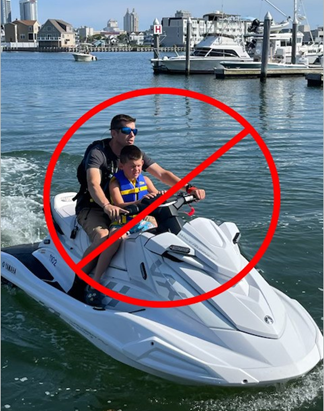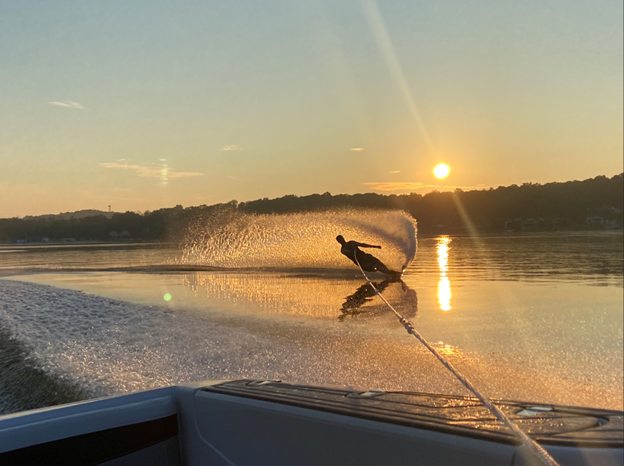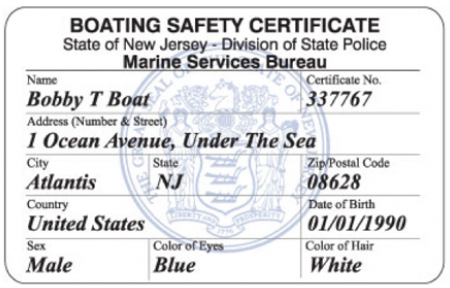You are trying to access the old NJSP website. You will be redirected to the new website automatically
Please bookmark the NEW website link at https://www.njsp.gov
Marine Services Bureau
Marine Safety Initiative
FAQ's
“The speed at which a power vessel moves through the water maintaining minimum headway and produces the minimum wake possible”
New Jersey regulations define "slow speed/no wake" as the speed at which a vessel moves through the water and is able to maintain minimum headway in relation to the vessel or structure being passed and producing the minimum wake possible.
New Jersey laws require that the speed of every vessel be regulated so as to not cause danger or injury to persons or property, either directly or by the effect of the vessels wake. In addition, New Jersey regulations require that all vessels must be slowed to “slow speed/no wake” when passing:
- A marina, pier, dock, wharf or abutment at a distance of 200 feet or less;
- Work barges, platforms or floats while actually engaged in work related activity;
- Through bridge openings of 400 feet or less;
- Through lagoons, canals and confined areas of less than 200 feet in width;
- Vessels not under command;
- Emergency vessels displaying sequential flashing or rotating blue lights; or
- Vessels engaged in activities recognized by the Coast Guard displaying rotating or sequential flashing red and yellow lights.
The speed of power vessels shall at all times be regulated so as to avoid danger or injury to all manner of craft whether floating, moored, anchored or underway, or to piers, wharfs, bulkheads, draw spans or other water-front construction, either directly or by the effect of the wash or wave raised by such power vessel through its speed or otherwise.
13:82-1.7 Speed(a) No person shall operate a vessel in a manner where the speed and/or wake of the vessel may cause danger or injury to life or limb or damage to property.
(b) All vessels shall reduce speed to slow speed/no wake when passing:
- Any marina, pier, dock, wharf or abutment at a distance of 200 feet or less, except on Lake Hopatcong, in accordance with N.J.A.C. 13:82-3.11;
- Work barges, platforms or floats while actually engaged in work related activity;
- Through bridge openings of 400 feet or less;
- Through lagoons, canals and confined areas of less than 200 feet in width;
- Vessels not under command;
- Emergency vessels displaying sequential flashing or rotating blue lights; or
- Vessels engaged in activities recognized by the Coast Guard displaying rotating or sequential flashing red and yellow lights.
(c) "Slow speed/No wake" as used in this section means the speed at which a vessel moves through the water and is able to maintain minimum headway in relation to the vessel or structure being passed and producing the minimum wake possible.
(d) State Police, on the recommendation of the Commission or on its own initiative, may designate a specific area not included in (b)1 through 6 above as a temporary slow speed/no wake area based on congestion, visibility, safety, or other good cause. All vessels moving through these areas shall reduce their speed to slow speed/no wake within a 200-foot radius of the sign or buoy, in addition to any restriction under (b) above.
(e) No person shall place, anchor, or construct any buoy that states or implies that an area is a "Slow Speed/No Wake" area except as provided in (a) through (d) above. The State Police may remove or have removed any such unauthorized buoy.
You can report boating violations to the nearest New Jersey State Police, Marine Services Bureau station (see the “Locate/Contact A Station” section of the web site for station locations and contact information). You will be asked to provide as much information about the vessel and its occupants as is possible, including, to the best of your ability, a description of the vessel, the location and direction of travel, the vessel registration number, a description of the operator and the number of passengers on board, and any other information that could be used to identify the vessel and/or the vessel operator.
If a boating violation is not witnessed by a police officer, a complaint cannot be signed by an officer. In that case, you may file a complaint against the vessel operator. This will require that you contact the municipal court in the jurisdiction in which the violation occurred, and furnish the information necessary to identify the vessel and/or operator. Please remember that if you choose to file a complaint, you will likely be required to testify in court.
Current Events
New Boating regulations for the 2024 Boating Season:
In addition to the mandatory cold weather PDF wear, some other new boating regulations have recently acquired
some legislative updates. Please be mindful of these new regulation changes for the 2024 boating season:

New Regulation 13:82-1.13 Riders
(b) The owner or certified operator of a personal watercraft (PWC) shall not
allow any person or persons to ride between the certified operator and the steering controls of the personal watercraft (PWC).
This measure aims to mitigate the risk of inexperienced persons assuming control of the steering and operating mechanism of the personal watercraft.
Many operators were allowing, mainly children, to ride in such a dangerous position.
This regulation is also meant to protect the lives of persons, especially smaller persons, from becoming crushed between the operator and steering controls of a
PWC as a result of a vessel accident.
Incidentally, no passenger shall be permitted to ride upon a personal watercraft
unless the passenger is able to securely hold onto the person in front of them or
to the handholds of the personal watercraft. This prohibition includes, but is not
limited to, any position where the person may be in danger of falling overboard.

New Regulation 13:82-3.1 Waterskiing and Wake Surfing
(b)All power vessels (including vessel, towline, and skier) conducting waterskiing operations, including wake surfing, shall, while underway, keep at least 200 feet distant from any wharf, marina, dock, pier, bridge structure, abutment, persons in the water, other vessels, any shore, approved aid to navigation, or mooring, except specifically provided otherwise in this chapter.
The new regulation has been implemented to increase the distance of waterskiing
and wake surfing operations from 100 feet to 200 feet from other vessels, any shore, approved aid to navigation, or mooring.
The intent of this regulation change is meant to preserve the safety of persons in the water and other vessels.
The primary goal of both these regulation changes is designed to reduce harm and save lives.
We can all get on board with that!




